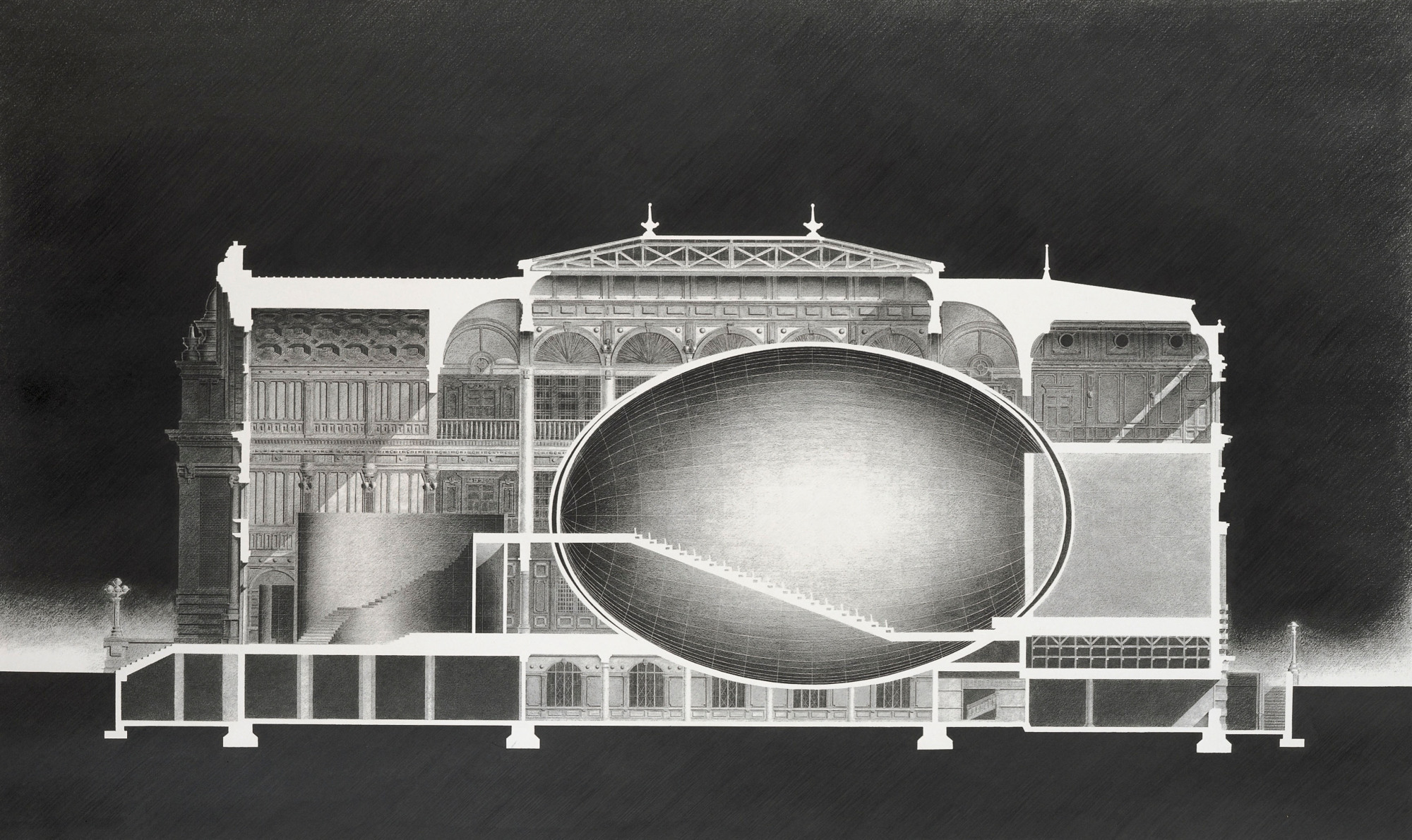'Impossible Architecture: The Architects' Dreams" at The National Museum of Art, Osaka, eulogizes aborted artistic conceptions. The models, drawings, photographs, CG animations and reading-intensive wall charts, representing more than 40 international architects and artists, are proposed as the frontiers of a century of architectural imagination. For the most part technically possible, these building plans were scuttled, usually because of social or political factors. This is an exhibition with a few bones to pick and a future point to make.
Opening the early chronological bracket is Vladimir Tatlin's symbol of modernity, the "Monument to the Third International" (1920). Tatlin proposed a 396-meter-tall spiral structure of steel and glass. Within it would have been four suspended geometric forms, one above the other, rotating in differing durations — a year, a month, a day, an hour. These spaces were to serve the Communist International, responsible for spreading the Bolshevik Revolution (1917-23) abroad. Tatlin's fanciful project, however, was critically dismissed for representing romantic bourgeois individualism.
The enclosing parameter of the exhibition is Zaha Hadid Architects + Architects JV's 2015 design for the Tokyo Summer Olympics' New National Stadium of Japan. Hadid tendered a futuristic keel-arch construction that won the official international design competition, bringing prestige to Tokyo's Olympic bid. Then Prime Minister Shinzo Abe unilaterally scrapped her plan in July 2015. A succeeding competition stipulated the use of wood and the architectural expression of "Japanese-ness."
















With your current subscription plan you can comment on stories. However, before writing your first comment, please create a display name in the Profile section of your subscriber account page.